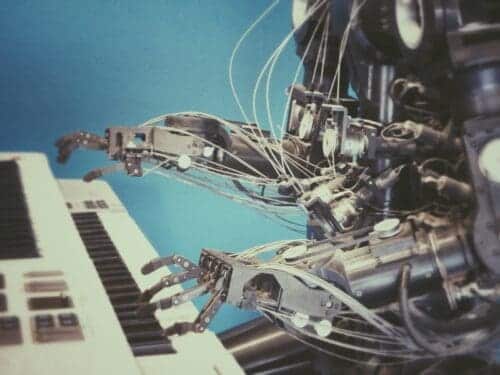This page is an index for all my technical posts, mainly focusing on Artificial Intelligence, Data Science, and Machine Learning. They also include more theoretical discussions about applied Philosophy of Mind and Psychology.
If you need a specific technical post, you can always search for it.

Technical Posts
An annotated path to start with Machine Learning
A curated analysis of a learning path for newbies to begin studying and working with Machine Learning and Data Science.
Quickprop: an almost forgotten neural training algorithm
Analysis of the Quickprop learning algorithm as a potential alternative to standard back-propagation used in neural networks.
Fixed-delay smoothing in HMM with Numpy
A simple example in Python of fixed-delay smoothing in a Hidden Markov Model to make predictions in a chain of related events.
Twitter Sentiment Analysis with Gensim Word2Vec and Keras Convolutional Networks
An example of sentiment analysis is based on the Twitter dataset, which was built using a Word2Vec model processed with a convolutional neural network.
BBC News classification algorithm comparison
Comparison of different classification approaches for a Natural Language Processing problem based on the BBC news lines dataset.
Hodgkin-Huxley spiking neuron model in Python
The Hodgkin-Huxley spiking neuron model is analyzed with a brief theoretical discussion and a functional example in Python.
Deep learning, God, and Zen emptiness
Existential analysis of the relationship between advancements in Artificial Intelligence and Deep Learning and spiritual research.
Assessing clustering optimality with instability index
Description of a method to assess the optimality of a clustering approach checking the stability of clusters to small perturbations.
Mutual information in classification tasks
An analysis of the relationship between maximization of mutual information and minimization of cross-entropy in machine learning tasks.
A model-free collaborative recommendation system in 20 lines of Python code
A simple and theoretically explained Python snippet shows an example of a model-free recommender system using the Alternating Least Squares algorithm.
Reuters-21578 text classification with Gensim and Keras
Learn about LSTM text classification using the Reuters-21578 dataset. Discover the categories and distribution of news lines for topics, places, people, organizations, and exchanges.
Hebbian Learning
Analysis of the Hebbian Learning method to train neural networks and extract a dataset’s principal components.
Instance-Based Learning
An introduction to instance-based learning, discussing the nearest neighbors’ algorithm implementations and the implications on performance.
Fisher Information
An introduction to the concept of Fisher information and its connection with an estimator’s likelihood and variance.
Artificial Intelligence is a matter of language
An analysis of the connection between human language and artificial intelligence with a connection to the most important psychological concepts.
Hopfield Networks
An introduction to Hopfield networks focusing on their ability to store patterns in local minima and to recover them when corrupted input is presented.
Hopfield Networks addendum: Brain-State-in-a-Box model
An introduction to the Brain-State-in-a-Box model focusing on the analogies with Hopfield networks and its ability to recover corrupted patterns.
PCA with Rubner-Tavan Networks
An explanation of how Rubner-Tavan networks can extract the principal components of a dataset without any matrix eigendecomposition.
Linearly Separable? No? For me, it is! A Brief Introduction to Kernel Methods
An introduction to kernel methods to transform native linear classifiers into non-linear ones that can solve more complex classification problems.
A Brief (and Comprehensive) Guide to Stochastic Gradient Descent Algorithms
An introduction to the Stochastic Gradient Descent optimization method to train neural networks, with basic concepts and some helpful improvements. A fundamental concept of Data Science and Machine Learning.
Passive Aggressive Algorithms
An introduction to Passive-Aggressive classification and regression algorithms to implement online machine learning strategies.
A glimpse into the Self-Organizing Maps (SOM)
A quick introduction to Self-Organizing Maps to auto-cluster data according to the topological features of the input samples.
Hetero-Associative Memories for Non-Experts: How “Stories” are memorized with Image-associations
An introduction to Hetero-Associative memories to simulate the mental process of recovering memories triggered by a specific event.
Are recommendations really helpful? A brief non-technical discussion
A non-technical discussion about the usefulness of machine-learning recommendation systems and how they should be designed to improve sales.
Recommendations and User-Profiling from Implicit Feedback
An analysis of a recommender system and user profiling tool based on customer text reviews and a Data Science approach based on Deep Learning.
Customer Journey Planning and Optimization through Reinforcement Learning
A discussion of how standard reinforcement learning techniques can be implemented to optimize a customer journey dynamically and optimize sales.

Presentations
Crash-Introduction to Reinforcement Learning
A presentation about the main concepts of Reinforcement Learning focusing on agents, environments, action planning, and policies. Extremely useful for those interested in Data Science and Machine Learning.
Minds vs. AIs
A keynote to discuss the differences and relationships between human minds and artificial intelligence models.
If you like my technical posts, you can always donate to support my activity! One coffee is enough!

